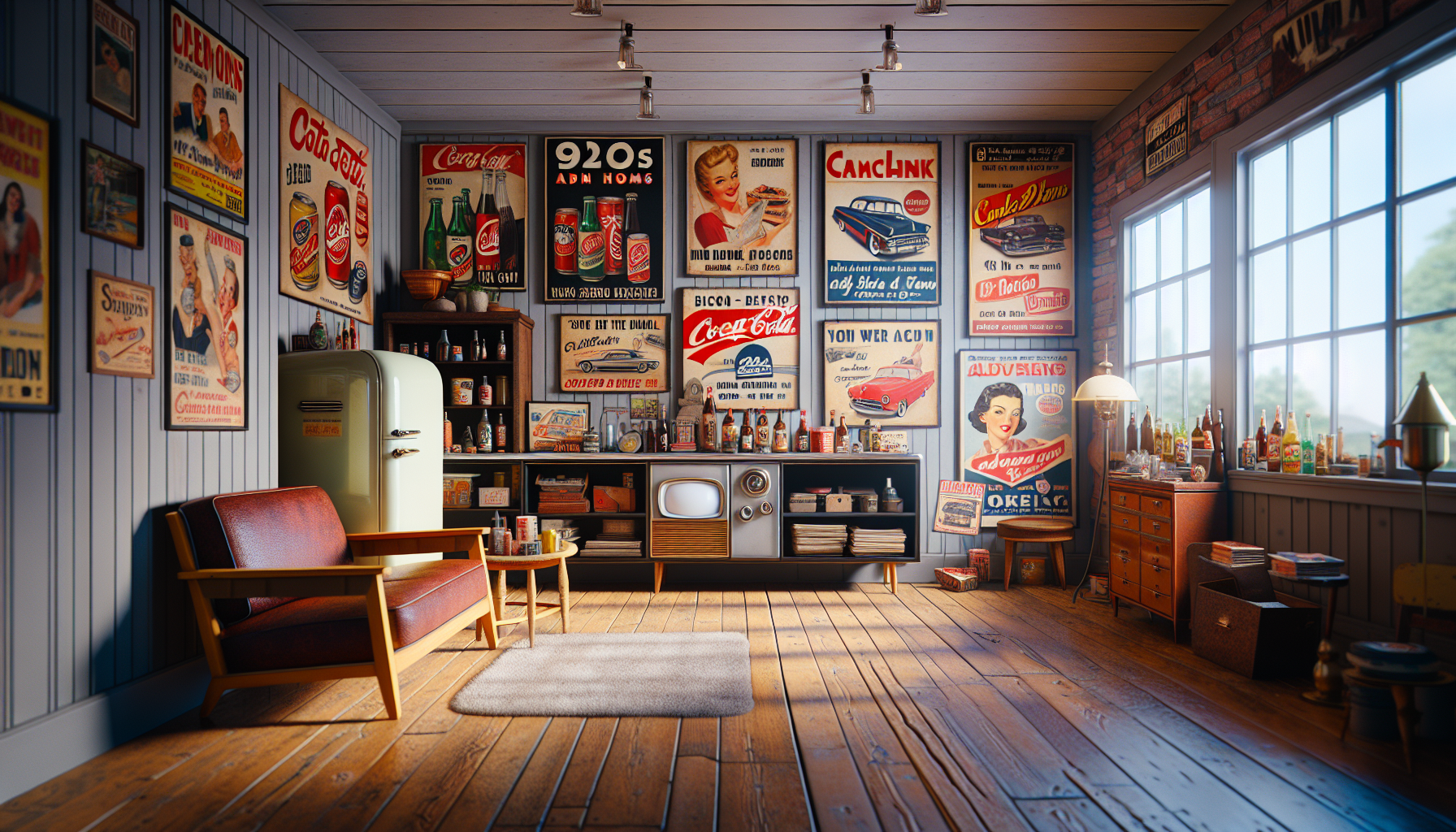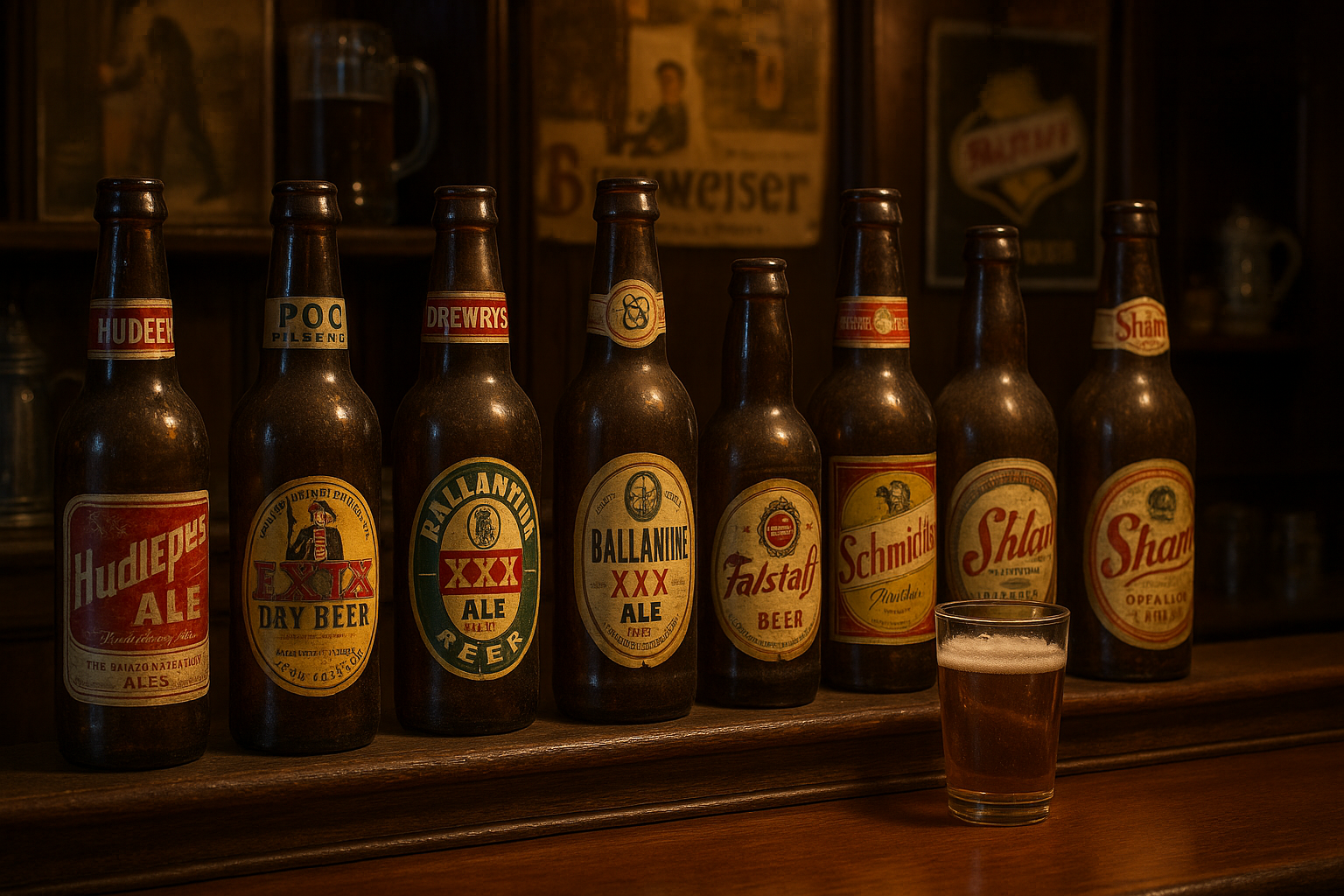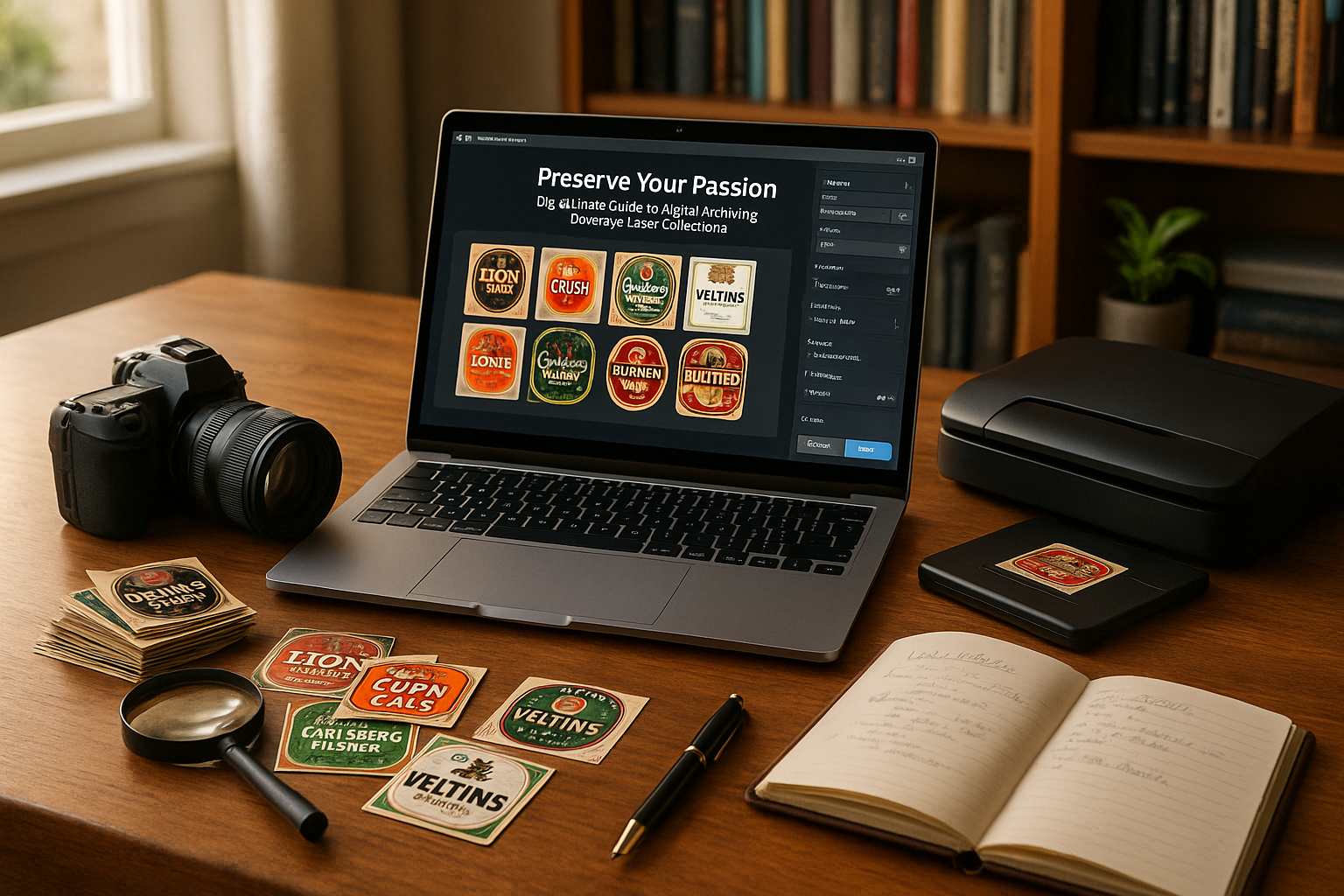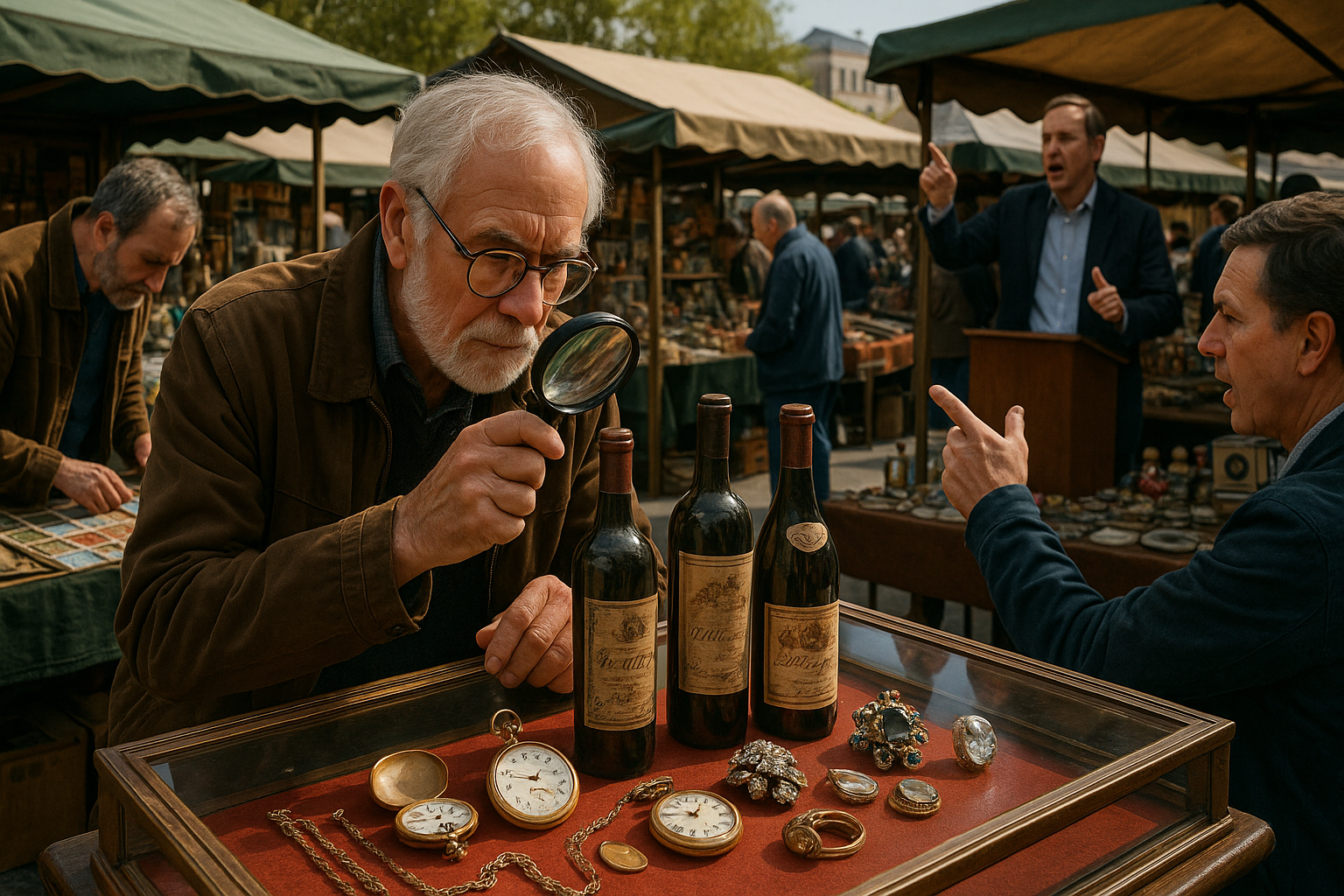In a world where digital marketing dominates and advertisements are crafted to grab our attention with just a fleeting glance, it’s both refreshing and intriguing to take a step back and immerse ourselves in the charm of vintage print ads. These relics from a bygone era tell stories not just of products, but of the cultural landscape and societal values of their time. Each ad is a small window into history, capturing the essence of a period defined by its innovations, desires, and aesthetics. As we explore these nostalgic treasures, we’ll uncover how brands communicated with their audiences long before the advent of the internet and social media, and why these advertisements still resonate with us today. 📜
Vintage print ads are more than just marketing tools; they are artifacts of art and culture. With bold typography, hand-drawn illustrations, and carefully chosen color palettes, these ads were crafted with an artistry that seems almost lost in today’s fast-paced digital age. They tell us about the evolution of advertising techniques and give us insights into how brands built their identities. From the elegantly simple Coca-Cola ads of the 1940s, which promised refreshment and comfort during wartime, to the rebellious and vibrant campaigns of the 1960s that echoed the spirit of change, each ad offers a narrative as rich as the era it represents. These campaigns were instrumental in shaping consumer behavior, using storytelling and emotional appeal to forge connections with audiences.
As we delve into the world of vintage print ads, we’ll examine the pivotal role they played in the branding strategies of the past. We’ll uncover the innovative tactics brands used to stand out in a crowded marketplace, and how these strategies have evolved—or in some cases, remained surprisingly consistent—over the decades. From the clever use of slogans that have etched themselves into our collective memory, to the strategic placement in magazines and newspapers that maximized visibility, we’ll see how marketers of the past were pioneers in their field, laying the groundwork for the techniques we see today. 📰
The Allure of Vintage Print Ads
Vintage print ads hold a unique charm, transporting us back to a time when marketing was both simpler and more direct. These advertisements, often laden with striking visuals and clever taglines, offer a fascinating glimpse into the cultural and social dynamics of the past. They provide a window into the evolution of consumerism and the strategies brands used to capture the imagination of their audiences. Let’s delve into the captivating world of vintage print ads and explore the enduring impact they have on modern advertising.
The beauty of vintage ads lies in their artistic expression. Many featured hand-drawn illustrations and bold typography that captured the essence of the era. These elements not only showcased the artistic trends of the time but also reflected the technological limitations and innovations in printing techniques. The focus was often on creating visually appealing content that could captivate the audience at a glance, as attention spans were shorter and the competition for consumer attention fierce. This emphasis on artistry resulted in a unique aesthetic that continues to inspire modern advertisers and designers.
Furthermore, vintage print ads offer a reflection of societal norms and values from different eras. They reveal insights into the roles and expectations of gender, family, and technology, often highlighting stereotypes and assumptions that were prevalent at the time. This historical context adds a layer of depth and intrigue to these ads, making them not just marketing tools but also cultural artifacts that chronicle the evolution of social attitudes and consumer behavior. As we examine these nostalgic pieces, we gain a deeper understanding of how far society has come and how these perceptions have shaped the advertising landscape.
Iconic Brands and Their Vintage Print Ads
Some brands have become legendary, in part due to their memorable vintage print ads. These advertisements helped to establish brand identity and consumer loyalty, laying the foundation for the success these companies enjoy today. One such example is Coca-Cola, whose vintage ads are iconic in their portrayal of happiness and refreshment. From the classic Santa Claus imagery to the depiction of the ideal American family, Coca-Cola’s ads were instrumental in cementing its status as a household name.
Another notable brand is Marlboro, which revolutionized cigarette advertising with its rugged cowboy imagery. The “Marlboro Man” became synonymous with masculinity and freedom, transforming the perception of the brand and driving its popularity. This campaign is often studied in marketing courses as a prime example of effective branding and consumer psychology. By associating its product with a desirable lifestyle, Marlboro was able to capture the imagination of consumers and create a lasting legacy.
To provide a clearer picture, here’s a comparison of key elements from some iconic vintage print ads:
| Brand | Key Visual Element | Message | Impact |
|---|---|---|---|
| Coca-Cola | Santa Claus | Joy and Refreshment | Established holiday branding |
| Marlboro | Marlboro Man | Freedom and Masculinity | Redefined cigarette marketing |
| Ford | Family Cars | Reliability and Innovation | Solidified brand trust |
By examining these examples, we can appreciate the creativity and strategic thinking that went into crafting these ads. Each brand effectively communicated its core message and values through carefully curated visuals and text, leaving a lasting impression on consumers.
The Impact of Vintage Ads on Modern Advertising
The influence of vintage print ads on modern advertising is undeniable. Many contemporary campaigns draw inspiration from the aesthetics and techniques of the past, using nostalgia to evoke emotions and connect with audiences. Retro-inspired ads can often be seen across various media platforms, blending old-school charm with modern sensibilities to create a unique and memorable experience for consumers.
A significant aspect of this influence is the use of storytelling in advertising. Vintage ads were adept at weaving narratives that resonated with consumers, whether through a simple product story or a more elaborate lifestyle portrayal. This emphasis on storytelling has been carried forward into modern advertising, where brands seek to engage audiences on a deeper level by crafting compelling narratives around their products and services. By tapping into emotions and shared experiences, advertisers can create a powerful connection with consumers that extends beyond the mere transaction.
Moreover, the visual style of vintage ads continues to inspire contemporary design. The use of bold colors, striking typography, and artistic illustrations has seen a resurgence in recent years, as brands aim to stand out in a crowded marketplace. This retro aesthetic not only captures attention but also evokes a sense of nostalgia that can appeal to both older and younger audiences. As consumers become more visually literate and discerning, the ability to blend past and present styles becomes a valuable asset for marketers.
Exploring the Evolution of Print Advertising
To truly appreciate the impact of vintage print ads, it’s essential to explore the evolution of print advertising over the decades. From the early days of newspaper ads to the glossy magazine spreads of the mid-20th century, print advertising has undergone significant transformations in response to technological advancements and changing consumer preferences.
In the early 1900s, print ads were primarily text-based, with simple illustrations and a focus on product features. As printing technology advanced, so did the complexity and creativity of ads. The 1920s and 1930s saw the rise of Art Deco influences, with bold geometric shapes and vibrant colors dominating the design landscape. This era also marked the beginning of celebrity endorsements, as advertisers recognized the power of associating their products with popular figures.
The post-war boom of the 1950s and 1960s ushered in a golden age of print advertising, characterized by the use of photography and aspirational imagery. Brands like Volkswagen and Coca-Cola became known for their innovative and memorable ads that combined humor, wit, and clever messaging. These decades also saw the emergence of advertising agencies, which played a crucial role in shaping the direction of marketing campaigns and establishing industry standards.
As we move into the digital age, print advertising continues to adapt and evolve. While digital media dominates the marketing landscape, print ads still hold a valuable place in the mix, offering a tangible and trusted form of communication. By understanding the history and evolution of print advertising, we gain insights into the enduring power of these nostalgic pieces and their relevance in today’s fast-paced world.
The Legacy of Vintage Print Ads
The legacy of vintage print ads is one that continues to influence and inspire. As cultural artifacts, these ads offer a snapshot of history, capturing the zeitgeist of different eras and reflecting the values and aspirations of society. They remind us of the power of creativity and storytelling in advertising, and the importance of connecting with consumers on a personal and emotional level.
For those interested in exploring this rich history further, numerous resources are available. From books and online archives to museums and exhibitions, there’s a wealth of material dedicated to preserving and celebrating the art of vintage print ads. Additionally, for a visual exploration, you might find this YouTube video enlightening: “A Century of Vintage Ads” by the channel Retrospective Ads.
- Understand the historical context and artistic trends of vintage ads.
- Recognize the impact of iconic brands and their advertising strategies.
- Explore the evolution and influence of print advertising on modern marketing.
Assista ao vídeo abaixo para uma viagem visual através de alguns dos anúncios impressos mais icônicos do século passado:
A Century of Vintage Ads – Retrospective Ads 📺

Conclusion
In conclusion, our journey through vintage print ads has been both an enlightening and nostalgic experience, offering a captivating glimpse into the past and highlighting the evolution of advertising and consumer culture. Throughout the article, we explored how these advertisements served not only as promotional tools but also as cultural artifacts that reflected the societal values, technological advancements, and aesthetic preferences of their respective eras.
Firstly, we delved into the artistry and creativity that characterized vintage print ads. From the intricate illustrations of the early 20th century to the bold, colorful graphics of the 1960s, these ads were not just about selling a product but were also about telling a story and evoking emotions. The use of typography, color, and imagery was carefully crafted to capture attention and convey the brand’s message effectively.
Moreover, we examined the portrayal of gender roles and societal norms within these advertisements. While some ads reinforced traditional stereotypes, others began to challenge the status quo, paving the way for more progressive representations in advertising. This evolution mirrors the broader changes in society and highlights the role of advertising as both a reflection and influencer of cultural shifts.
Additionally, we discussed the technological advancements that shaped advertising strategies. The transition from hand-drawn illustrations to photographic images, and eventually to digital design, illustrates how innovation has continually transformed the advertising landscape. These advancements not only enhanced the visual appeal of ads but also expanded the reach and impact of advertising campaigns.
The enduring appeal of vintage print ads lies in their ability to evoke nostalgia and connect with audiences on a personal level. In a world where digital media dominates, these ads serve as a reminder of a simpler time when advertising was a tactile, tangible experience. They invite us to reflect on the past, appreciate the artistry and creativity involved, and acknowledge the lasting impact these ads have had on modern advertising practices.
The importance of studying vintage print ads extends beyond mere nostalgia. By analyzing these advertisements, we gain valuable insights into the history of branding, marketing strategies, and consumer behavior. This understanding can inform current and future advertising practices, encouraging creativity and innovation while also respecting the rich heritage of the advertising industry.
As we conclude this exploration of vintage print ads, we invite you, our readers, to reflect on your own experiences with these nostalgic artifacts. Have any particular ads left a lasting impression on you? How do you see the evolution of advertising influencing current trends? We encourage you to share your thoughts and memories in the comments section below. 😊
Furthermore, if you found this article insightful, please consider sharing it with friends, family, or colleagues who might also appreciate a nostalgic journey through the world of vintage print ads. By doing so, you help preserve the legacy of these iconic advertisements and inspire others to explore the rich history of advertising.
For those interested in diving deeper into the world of vintage ads, here are a few resources that offer extensive collections and analyses of print advertisements from the past:
1. [The Advertising Archives](https://www.advertisingarchives.co.uk) – A comprehensive collection of advertisements spanning multiple decades, offering a fascinating look at the evolution of advertising styles and techniques.
2. [Vintage Ad Browser](https://www.vintageadbrowser.com) – A treasure trove of vintage ads, allowing you to explore different categories and time periods, providing a visual history of advertising.
3. [Ad*Access Project](https://library.duke.edu/digitalcollections/adaccess/) – Hosted by Duke University, this project provides access to a large collection of print advertisements from the United States and Canada, offering insights into cultural and societal trends.
In closing, let us continue to appreciate the art and history of vintage print ads, recognizing their impact on modern advertising and celebrating their role as timeless cultural artifacts. By embracing the lessons and inspiration they offer, we can ensure that the legacy of these iconic advertisements lives on, inspiring future generations of advertisers and consumers alike. 📚✨
Toni Santos is a visual poet and botanical dreamweaver, archiving the ephemeral beauty of dreams through nature’s delicate language.
In his artistic universe, every petal, vine, and root becomes a memory—an echo from the subconscious—preserved in time like pages from an ethereal journal. Toni treats plants not just as living beings, but as dream-symbols: vessels of forgotten feelings, silent wishes, and secret stories waiting to unfold.
His work is rooted in the belief that nature holds the vocabulary of dreams. Through botanical compositions, symbolic floral creations, and enchanted visual studies, he gives form to the unseen — the moment between sleep and wakefulness, where memory fades and imagination begins.
As the visionary behind Vizovex, Toni curates collections that feel like fragments of a dreamscape: moss-filled glass jars, mythic flowers, ancient botanical symbols reimagined. These creations invite you to explore your inner worlds and reawaken your sense of wonder.
His work is a tribute to:
The dreamlike language of plants and natural symbols.
The quiet messages found in forgotten moments.
The art of recording the soul’s memories in organic form.
Whether you’re a seeker of meaning, a lover of myth, or someone who drifts between the symbolic and the real, Toni welcomes you to explore an archive of dreams — one petal, one relic, one timeless whisper at a time





